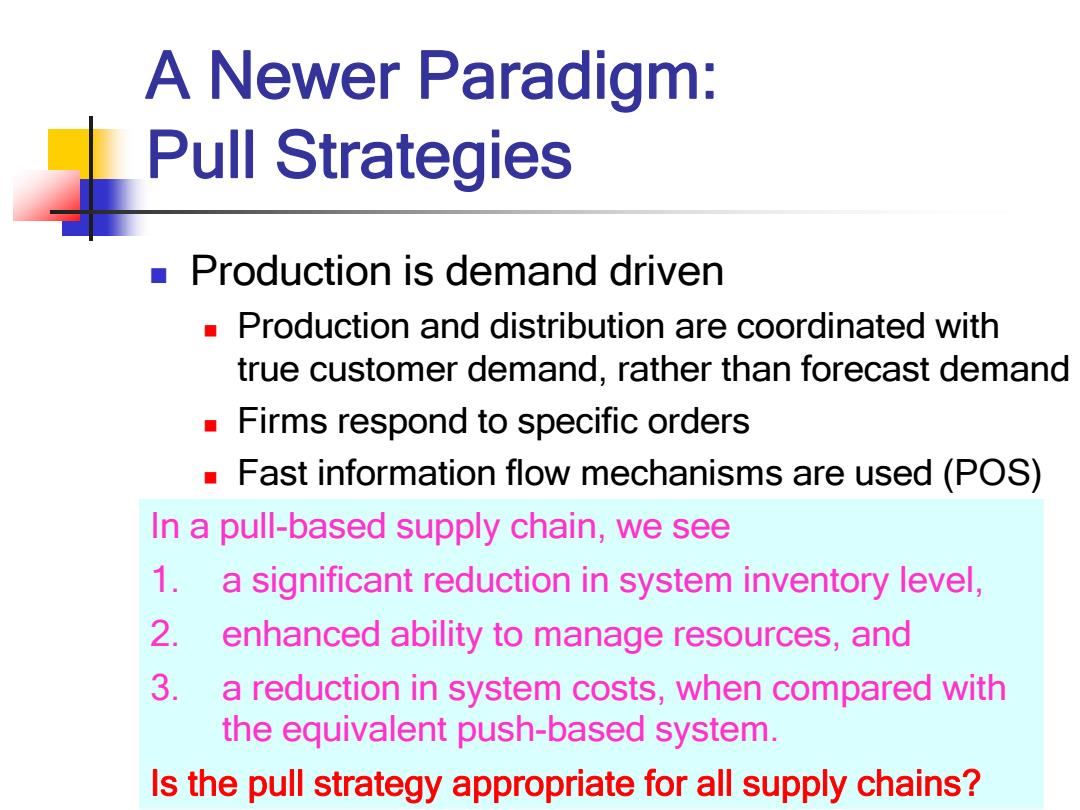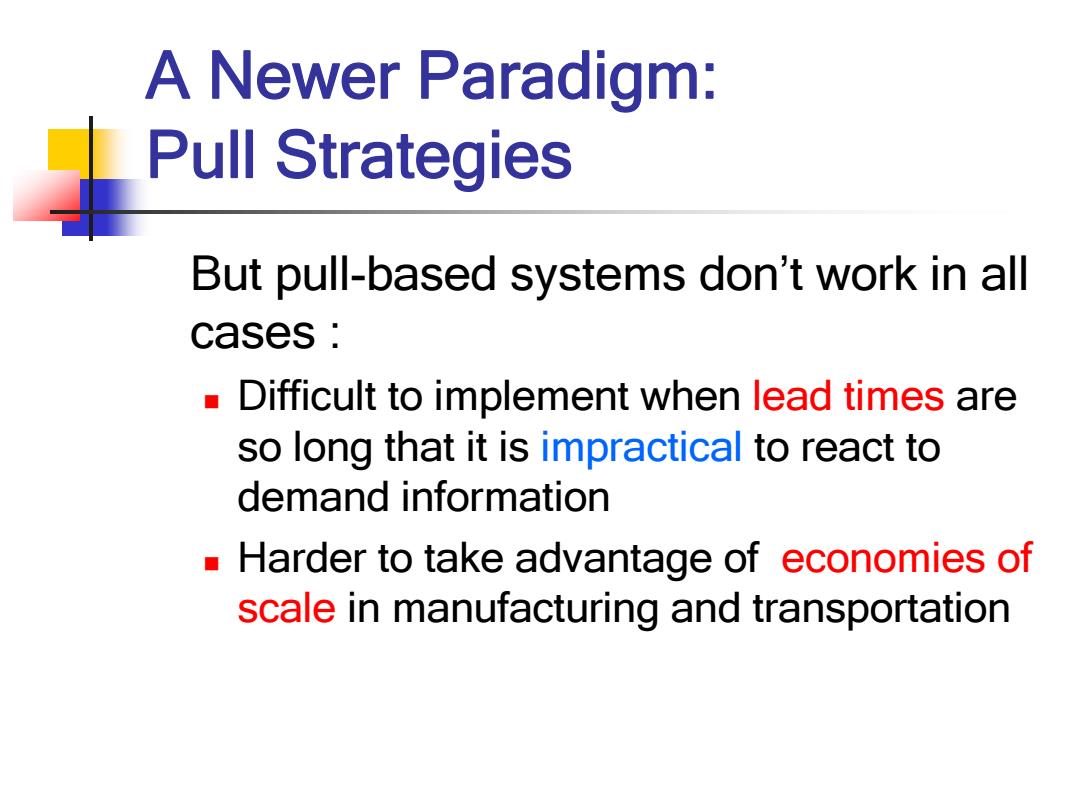
A Newer Paradigm: Pull Strategies Production is demand driven Production and distribution are coordinated with true customer demand,rather than forecast demand Firms respond to specific orders Fast information flow mechanisms are used (POS) In a pull-based supply chain,we see 1.a significant reduction in system inventory level, 2. enhanced ability to manage resources,and 3. a reduction in system costs,when compared with the equivalent push-based system. Is the pull strategy appropriate for all supply chains?
A Newer Paradigm: Pull Strategies Production is demand driven Production and distribution are coordinated with true customer demand, rather than forecast demand Firms respond to specific orders Fast information flow mechanisms are used (POS) Pull Strategies result in: Reduced lead times (better anticipation) Decreased inventory levels at retailers and manufacturers Decreased system variability Better response to changing markets In a pull-based supply chain, we see 1. a significant reduction in system inventory level, 2. enhanced ability to manage resources, and 3. a reduction in system costs, when compared with the equivalent push-based system. Is the pull strategy appropriate for all supply chains?

A Newer Paradigm: Pull Strategies But pull-based systems don't work in all cases Difficult to implement when lead times are so long that it is impractical to react to demand information Harder to take advantage of economies of scale in manufacturing and transportation
A Newer Paradigm: Pull Strategies But pull-based systems don’t work in all cases : Difficult to implement when lead times are so long that it is impractical to react to demand information Harder to take advantage of economies of scale in manufacturing and transportation